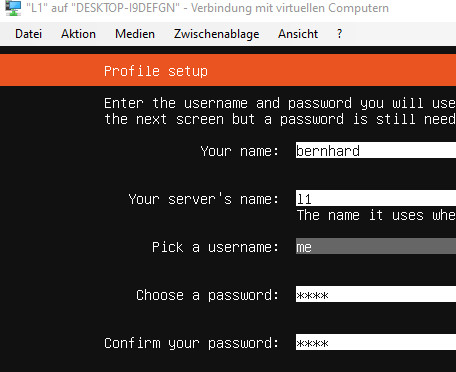Another digression at this point, because this took me quite some time to figure out.
After I installed Ubuntu as described earlier, everything seemed to work fine, until I realized that the main drive (mapped to ‘/’ in Ubuntu) was running out of space. Given that I use a 512GB drive, I was a bit shocked.
First, I searched for the largest folders on the drive, to find the culprit. The best tool to support you here is the nCurses Disk Usage tool. You can install it as follows:
sudo apt-get install ncduAfterwards, you can run it like this for the root folder:
sudo ncdu /You will end up with a screen like that (with your folders sorted by size):

Even so, this was very helpful, I did not find any folder that was really exceedingly large. So, what next? After running df -h to again check the size of the drives, I realized that the line for the root folder looked like this:
/dev/mapper/ubuntu--vg-ubuntu--lv 4,0G 3,6G 0,4G 90% /So basically, my root folder only had 4GB of space, of which 90% were already used. But why? Again, I had put a 512GB SSD in. Further research, especially searching for the name of the filesystem (ubuntu--vg-ubuntu--lv) revealed the root cause. The LVM partition (logical volume) did not use all the space of the volume group. Ubuntu uses volume groups and logical volumes within them and maps the root folder to it. Read this for more detail, please.
So, first I called sudo vgdisplay to check if there was still free space in the volume group. And sure enough, there were more than 470GB still available (see “Free PE / Size”).
--- Volume group ---
VG Name ubuntu-vg
System ID
Format lvm2
Metadata Areas 1
Metadata Sequence No 3
VG Access read/write
VG Status resizable
MAX LV 0
Cur LV 1
Open LV 1
Max PV 0
Cur PV 1
Act PV 1
VG Size <473,89 GiB
PE Size 4,00 MiB
Total PE 121315
Alloc PE / Size 922 / <3,61 GiB
Free PE / Size 121315 / <473,89 GiB
VG UUID bTkwD5-jadm-RbQB-1Hh1-2P4M-FiYW-EfPLfmA call to sudo lvdisplay then confirmed, that the logical volume was much smaller:
--- Logical volume ---
LV Path /dev/ubuntu-vg/ubuntu-lv
LV Name ubuntu-lv
VG Name ubuntu-vg
LV UUID W8dT1K-3aK9-rbjS-kO03-R6Os-8c52-jlwS5K
LV Write Access read/write
LV Creation host, time ubuntu-server, 2023-12-04 11:43:11 +0100
LV Status available
# open 1
LV Size <4,0 GiB
Current LE 922
Segments 1
Allocation inherit
Read ahead sectors auto
- currently set to 256
Block device 252:0Now, run lvextend -l +100%FREE /dev/ubuntu-vg/ubuntu-lv to use up all available space in the volume group. and confirm by calling sudo lvdisplay again:
--- Logical volume ---
LV Path /dev/ubuntu-vg/ubuntu-lv
LV Name ubuntu-lv
VG Name ubuntu-vg
LV UUID W8dT1K-3aK9-rbjS-kO03-R6Os-8c52-jlwS5K
LV Write Access read/write
LV Creation host, time ubuntu-server, 2023-12-04 11:43:11 +0100
LV Status available
# open 1
LV Size <473,89 GiB
Current LE 121315
Segments 1
Allocation inherit
Read ahead sectors auto
- currently set to 256
Block device 252:0And voilá, now my root folder has all the space it needs, as another call to df -h confirmed:
/dev/mapper/ubuntu--vg-ubuntu--lv 466G 94G 353G 21% /Wenn Sie diese Felder durch einen Klick aktivieren, werden Informationen an Facebook, Twitter, Flattr, Xing, t3n, LinkedIn, Pinterest oder Google eventuell ins Ausland übertragen und unter Umständen auch dort gespeichert. Näheres erfahren Sie durch einen Klick auf das i.









